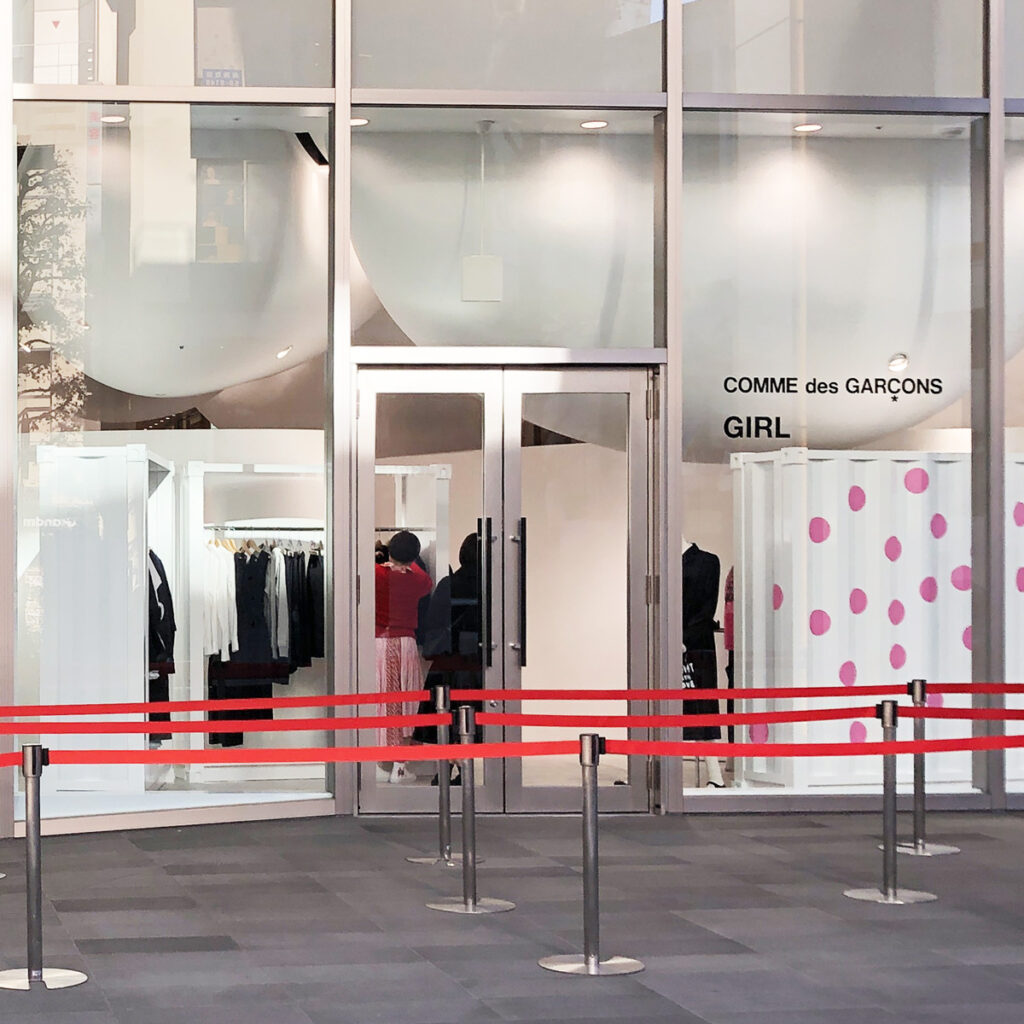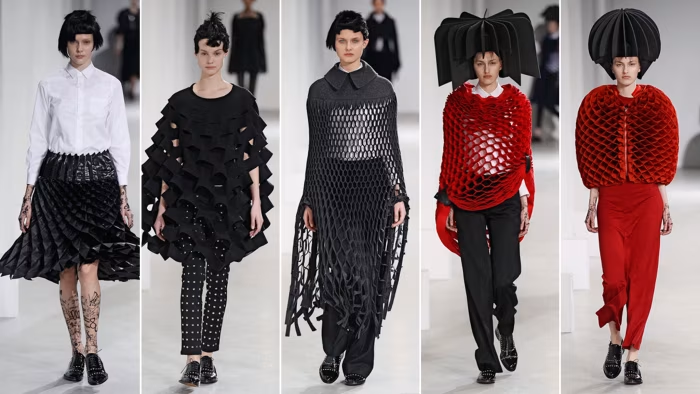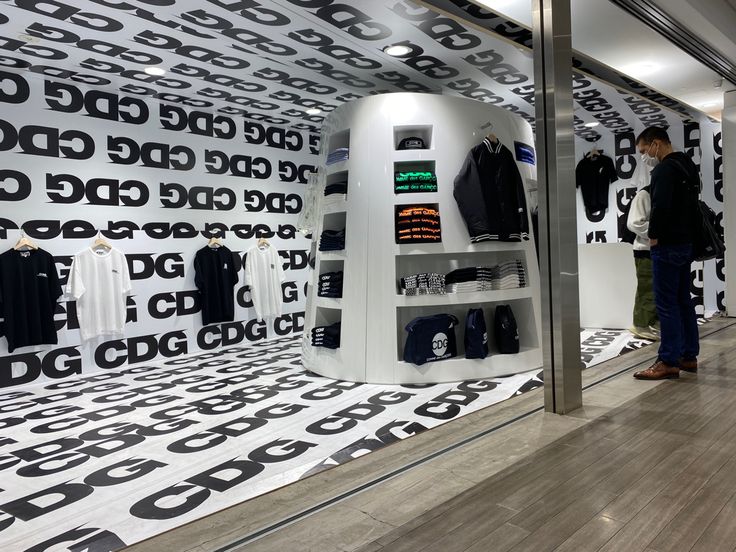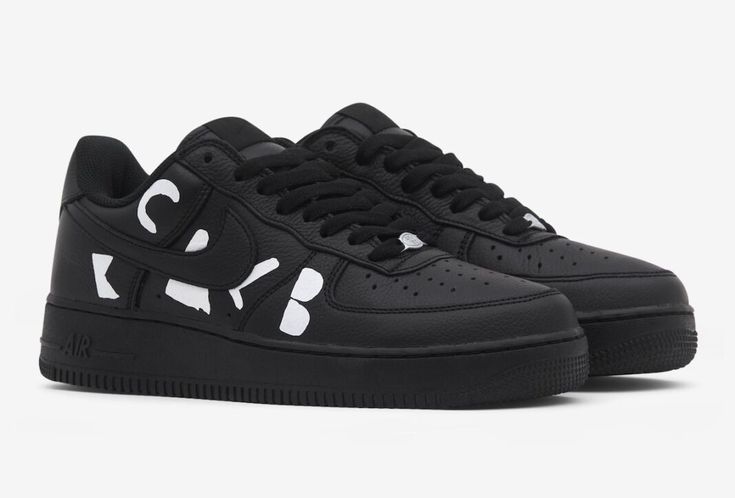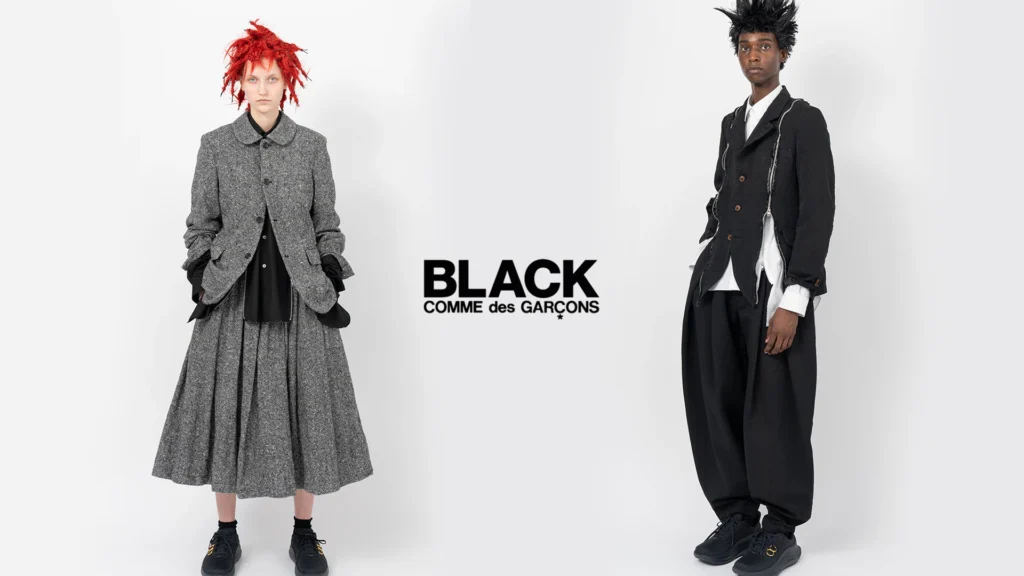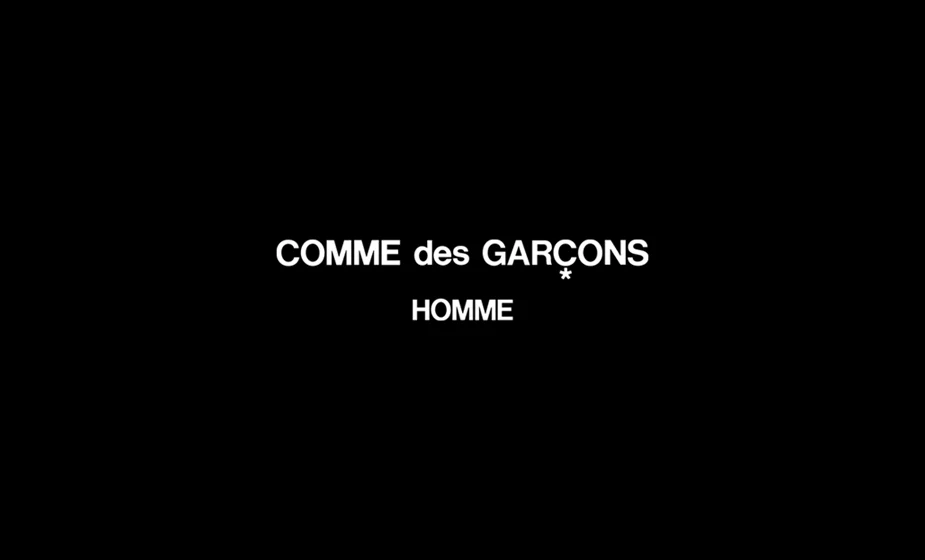Fashion has never been afraid of being rebellious, and there can be no designer who has ever used defiance as an art like Rei Kawakubo, the genius of Comme des Garcons (CDG). Her brand has, since 1969, contested the entire concept of what fashion is supposed to be – breaking down beauty standards, transforming the body shape, and influencing generations of designers who desire something that is genuine as opposed to pretty.
This hidden secret delves into the history of Comme des Garçons, a brand that has emerged as a world icon of avant-garde fashion. In the process, you will learn how a single woman transformed not just the clothes, but also the culture, per se.
The Birth of a Fashion Revolution (1969-1972)
All great tales have a beginning. In the case of Rei Kawakubo, this was the shot that was fired in Tokyo, 1969.
She, having just graduated in fine arts and literature at Keio University, began her career as a freelance stylist in advertising agencies. Unsatisfied with what she discovered in shops, Kawakubo started to create her own clothing, not to be a follower of trends, but to convey ideas.
Once she said that she did not want to design clothes that would make women look pretty. I had a desire to create clothes that would make women feel strong.
In 1969, she created Comme des Garcons, which translates to Like Boys in French – a very nuanced yet radical way of dressing against gendered clothing. It had a hint of her general philosophy, that clothes should not follow rules, gender, or convention.
Categories of the aesthetic of CDG at the beginning of its history:
- Sparsely essential, nearly monastic shapes.
- Black and white color scheme.
- Deconstructed tailoring
- Focus on form, not decoration.
In 1972, Kawakubo had an increasingly underground fan club in Tokyo and predominantly artists, designers, and outsiders who viewed beauty in her rebellion. CDG was not merely fashion; it was an unspoken revolution.
The Rise in Japan (1973-1980)
Rei Kawakubo formally incorporated Comme des Garcons Co., Ltd in 1973, and the label ceased to be a passion project and became a fashion house.
Early Cult Position of Tokyo and Young Tokyo, and CDG
In the 1970s, the Japanese young people were impatient. Western fashion had conquered Tokyo, and the youth were seeking something that would capture their post-war identity, something hard, intellectual, and distinctly Japanese. That was what Kawakubo presented to them.
Her asymmetrical and unfinished hems in designs shattered all the rules of elegance. The pieces by CDG had a ragged appearance, worn-out, and very human-like, which was a strong contrast with the perfectionism of the Parisian couture.
The most notable developments of this period:
- 1975: First CDG boutique is established in the Aoyama area of Tokyo.
- 1978: Comme des Garcons Homme, the men’s line was launched.
- Late 1970s: CDG is a household name in the Japanese avant-garde community.
At the close of the decade, Rei Kawakubo developed a cult following and a unique look. But, yet, her real disturbance was to occur– and it would shake the capitals of the fashion of Europe.
The Paris Invasion (1981-1983)
The audience was not ready when Comme des Garcons was introduced in Paris in 1981. Models walked on the runway wearing oversized black clothes that were torn and incomplete. It was a potent, polarizing influence.
There was no idea what critics made of it. Others referred to it as post-atomic style and branded the style as Hiroshima Chic. But to some others, its conscious defects were genius.
Caroline Evans, a fashion historian, said about Rei Kawakubo: “Rei Kawakubo did not merely design clothes. The new way of seeing was designed by her.
This is one of the epochs in fashion history.
Together with Yohji Yamamoto and Issey Miyake, Kawakubo showed the world the design of Japanese avant-garde, the movement that focused on abstraction, asymmetry, and androgyny rather than putting glamour in Western standards.
Key Moments in Paris
- 1981: CDG Paris runway show first (shock and awe).
- 1982: Second exhibition makes Kawakubo an intellectual designer.
- 1983: Worldwide fame and a cult following.
When most fashion designers tried to please the body, Kawakubo transformed the body. She elevated fashion to being of idea, not a shape. And that changed everything.
The 1990s: International Growth and Imaginative Exploration
Comme des Garcons had transformed by the 1990s into an intellectual force with global influence and representation in all sectors of the fashion industry.
The CDG Universe Expands
The ten years were a period of experimentation by Kawakubo, unstoppable, like in structure, texture, and meaning. Her collections turned into philosophical writings, with many of them touching on the theme of beauty, identity, and destruction.
Major developments:
- Proliferation of sub-lines like Comme des Garcons Homme Plus, Comme des Garcons Noir, and Tricot Comme des Garcons.
- Establishment of boutiques in New York, Paris, and London.
- Cooperation with artists and musicians who had the disruptive energy of CDG.
Her greatest creation was probably in 1997, when she released a collection called Body Meets Dress, Dress Meets Body. Dresses have been padded in peculiar, bulbous shapes, and models strolled along the runway, making them a challenge to femininity and perfection ideals – not something everyone could aspire to be.
The media gave it the name Lumps and Bumps collection. It turned out to be one of the most legendary scenarios in modern fashion.
Vogue critic Suzy Menkes said that her piece by Rei makes one wonder what beauty is.
The History of the 1990s and Facts and Highlights
Year Event Significance
1992 Introduction of Comme des Garcons SHIRT Diversification to casual wear.
1994 Junya Watanabe designs his own brand under CDG, nurturing young talent.
1997 Body Meets Dress collection Redefines silhouette.
1999 The world sales are over 150 million dollars. CDG turns out to be a fashion empire.
The tactic of Kawakubo was to break the boundaries between fashion, art, and philosophy, and to open the way to the conceptual artists in the fashion world, such as Martin Margiela or Rick Owens.
The 2000s: The Era of Reinvention
The new millennium came with a new power – and Rei Kawakubo once again demonstrated that she could develop without contradiction.
PLAY: The Iconic Shift at Comme des Garcons
Kawakubo designed a more casual, graphic-based collection, Comme des Garcons PLAY in 2002, which incorporated the current popular heart logo, by Polish artist Filip Pagowski.
PLAY was not like that: friendly, wearable, and unexpectedly playful to CDG and its serious reputation. It was an immediate success with younger consumers in the worlds of avant-garde and mainstream fashion.
Fun Fact: By 2020, almost 50 percent of sales made by CDG were contributed by PLAY, and it is estimated to bring in over 200 million a year in revenue.
Dover Street Market: Retailing Differently
In 2004, Dover Street Market (DSM) was launched, a concept store, a multi-brand store located in London by Rei and her partner Adrian Joffe, but it looked more like a gallery than a shop.
Each season, DSM changes its design, and there are installations by such brands as Gucci, Balenciaga, and Nike. It is a mix of retail and an exhibition, an experience that best sums up the CDG spirit.
Today, DSM has locations in:
- London
- New York
- Tokyo
- Beijing
- Los Angeles
Paris (Launched 2021)
Teamwork and Creativity
The 2000s were also the beginning of the now legendary collaborations of CDG:
- Nike, in collaboration with Comme des Garcons (Air Force 1, Dunk Low, etc.)
- Louis Vuitton x CDG Ed. Bags.
- Moncler, Supreme, and H&M joint ventures.
And each of the alliances bore the CDG mark,–experimental, unexpected, and thumb-in-the-eye.
The 2010s: Cooperation, Culture, and Museum Recognition
Rei Kawakubo was on the digital frontline at a time when fashion had penetrated the digital era. The 2010s were characterized by the overlap between conceptual art and pop culture, and CDG flourished in the very centre of it.
The Collaboration Take-Off Culture
The partnerships of CDG in a co-branded hype dominated world were unique in terms of artistic value.
The most memorable ones consist of:
- Comme des Garcons x Supreme – a union of high fashion x skate culture.
- Comme des Garcons x Converse – the Chuck Taylors with the heart logo became famous worldwide.
- Comme des Garcons x Gucci (2020) – a clash between two opposites of creativity.
These projects made CDG reach a younger, more global audience and never lost its intellectual DNA.
Met Gala and Museum Legacy 2017
In 2017, the Metropolitan Museum of Art in New York devoted its annual Costume Exhibition to Rei Kawakubo – the first living designer to be featured in the event since Yves Saint Laurent in 1983.
The exhibit, Rei Kawakubo / Comme des Garcons: Art of the In-Between, had more than 140 works from her collections.
It delved into her repetitive subjects, the creation and the destruction, the chaos and the order, the fashion and the anti-fashion.
Andrew Bolton, the curator of the Met Costume Museum, described Rei Kawakubo as the most significant designer of our era.
This was an affirmation of what the fashion industry was secretly aware of: that Kawakubo is not merely a designer but a designer-philosopher of form.
The Modern Era (2020-Today): The Past and the Future
In the 2020s, the world had transformed radically, and Comme des Garcons was keeping up with the changes.
Sustainability and Digital Transformation
Although Kawakubo herself has been purposefully low-tech, CDG adhered to virtual presentations and digital fashion weeks during the pandemic years.
Her shows were still full of the trademark mystery and artistry, even on the Internet.
Concerning sustainability, CDG has already started to implement:
- Limited production to decrease waste.
- Reusing materials in capsule collections.
- Working with suppliers who practice ethical sourcing.
As opposed to eco-friendly eagerness brands that follow the trend, the way CDG does it is organic and resonates with its time-long admiration of imperfection and renewal.
The New Generation: CDG Family Tree
Like a club of designers fostered by Kawakubo, CDG still has a network of designers:
- Junya Watanabe – the man of technical excellence and innovations in denim.
- Kei Ninomiya, a metalworker and structural engineer.
- Tao Kurihara– a feminine experimental form.
They both bear the CDG spirit of freedom in experimentation.
The Continuing Influence
Even nowadays, CDG is among the limited number of fashion houses in which imagination continues to drive business.
It inspires luxury designers as well as individual streetwear creators around the world.
Recent Highlights:
Year Milestone Significance
2020 CDG and Gucci partnership: The meeting of tradition and eccentricity.
2021 Dover Street Market Paris3rd location in the world.
2023, Rei Kawakubo was awarded Japan’s Praemium Imperiale Award for Lifetime Contribution to the arts.
2025 Projected retrospective at the Mori Art Museum in Tokyo, in honor of 55 years of CDG.
To this day, at the age of 80, Rei Kawakubo still dominates design discourse, which shows that authentic creativity does not age; it only evolves.
Alexander Wang Biography.
Year Event Description
1969 Comme des Garcons Founding Rei Kawakubo begins designing in Tokyo.
1973 Company was formally registered Company registered as a business.
1981 Paris debut CDG hits the world of fashion hard.
1992 Introduction of CDG SHIRT Diversification of the brand.
1997 Body Meets Dress show defines the avant-garde fashion.
2002 PLAY line was introduced Heart logo was introduced.
2004, Dover Street Market was established, reinventing fashion retail.
2017 Met Gala exhibition, Institutional recognition.
2025 55th anniversary CDG is still a cultural powerhouse.
Great Reason as to why Comme des Garcons Still Matters
Why does Comme des Garcons survive beyond its 50-year mark?
It’s not nostalgia. It’s philosophy.
The work by Rei Kawakubo challenges the norms in terms of beauty, gender, and identity. Her clothes are not meant to be pleasing, but thought-provoking. They are in the middle between fashion and art, between chaos and control.
To a big number of fans, the possession of a CDG item is not about being luxurious; it is about being part of a group of thinkers and dreamers who hold the view that imperfection is beauty.
Case Study: Body Meets Dress, Dress Meets Body (1997)
In order to learn more about the philosophy of creativity at CDG, we should refer to one of its most popular collections.
Idea: The redefinition of the female body by distortion.
Execution: Padded dresses with padding in strange locations, hips, shoulders, and backs.
Response: The critics were split, yet it turned into one of the analyzed collections in the history of fashion.
What it meant:
Kawakubo did not ridicule femininity; she was actually wondering why the bodies of women needed to be a certain way. Her lumps and bumps fabricated image projected the unease of the society with imperfection, and made it art.
This is what CDG is all about: critique into creation.
Cultural Impact of Comme des Garcons
In addition to fashion, the influence of CDG is felt in:
- Art: Work with artists such as Cindy Sherman, Tao Komatsubara.
- Music: Favorite of celebrities such as Bjork, Kanye West, and Frank Ocean.
- Architecture: DSM stores are built in the brutalist, surrealist style.
- Streetwear: The CDG PLAY logo was a new icon of pop culture – Seoul to New York.
In brief, CDG has turned out to be not just a label, but a cultural language that is addressed to rebellion, intellect, and individuality.
Conclusion — A Legacy Beyond Fashion
More than half a century since Rei Kawakubo began sewing clothes for herself, Comme des Garçons remains one of the last true bastions of creative freedom in fashion. It thrives on paradox — elegance in imperfection, rebellion in restraint, beauty in distortion.
“Creation is not about beauty,” Kawakubo once said. “It’s about making something new.”
From the underground streets of Tokyo to the grand halls of the Met, CDG’s journey tells the story of how one woman’s refusal to conform transformed global fashion forever.
So, the question lingers:
Is Comme des Garçons still just a brand — or has it become a living, breathing language of rebellion?


